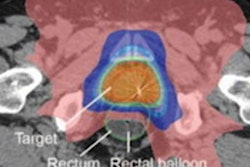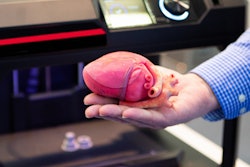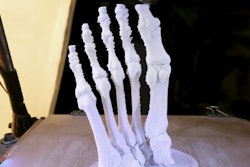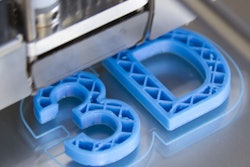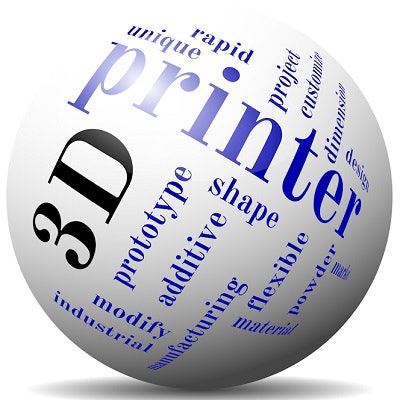
3D-printed surgical guides can be useful in breast conservation surgery performed on breast cancer patients after neoadjuvant systemic therapy, according to research published online February 9 in Scientific Reports.
Researchers led by Dr. Han Shin Lee of Gyeongsang National University Hospital in Changwon, South Korea, developed 3D-printed breast surgical guides that are produced from pretreatment MRI scans and mark the original tumor area directly on the breast. In a prospective study, they found that 39 patients who had received breast conservation surgery with assistance from the 3D-printed guides had a low rate of tumor-positive resection margins and local recurrence.
"By using [3D-printed breast surgical guides] as a localization method in patients receiving [neoadjuvant systemic therapy], it is possible to precisely target the original tumor area observed in the pretreatment MRI," the authors wrote. "In addition, the advantages of the method are that it is painless, does not include radiation, and does not increase the procedure time."
The guide, which was based on data acquired from supine MRI scans, was developed to improve on the shortcomings of breast imaging and localization techniques that have previously been used to perform breast-conserving surgery after neoadjuvant systemic therapy. With their approach, the original tumor area and breast are initially modeled three-dimensionally by combining pre- and post-treatment MRI data.
Next, this modeled image and 3D images constructed based on the MRI data are then combined to produce the 3D shape and safety excision margin of the tumor, according to the researchers. To ensure free margins, the surgical guide was modeled to be 0.5 cm outside of the tumor edges.
After being saved in a stereolithography (STL) file format, the prepared digital model is then exported to a 3D printer (Connex3 Objet500, Stratasys) to print the surgical guide. The model fits on the surface of the breast and includes a hole at the nipple. It also has direction marks indicating the opposite nipple and the suprasternal notch to prevent rotation of the guide, according to the authors.
"In addition to allowing for depictions of tumor range on the breast surface, the [3D-printed breast surgical guide] model included a column to guide the blue dye injection for an accurate indication of the tumor extent within the breast," they wrote.
The researchers utilized their method in a prospective study of 39 women undergoing breast conservation surgery following neoadjuvant systemic therapy for pathologically confirmed invasive breast cancer at Asan Medical Center in Seoul from July 2016 to January 2017.
After analyzing the biopsy results from these surgeries, the researchers found that the nearest distance between the tumor and the resection margin ranged from 1.2-7.8 cm, with a median of 3.9 cm. Tumor-positive resection margins were found in four patients (10.3%), compared with a 40% rate of tumor-positive margins reported in the literature for breast-conserving surgery after neoadjuvant systemic therapy.
Over a three-year follow-up, the researchers found that three (7.7%) had recurrent breast cancer, compared with a five-year 12.1% local recurrence rate reported from a prior meta-analysis of 10 randomized trials of breast conservation surgery after neoadjuvant systemic therapy.
The surgical guide offers many advantages over conventional localization techniques, according to the authors.
"In addition, the use of a [3D-printed breast surgical guide] allows for the preservation of normal breast tissue and precise tumor removal, enhancing the cosmetic effect," the authors wrote. "We expect that even beginners can easily overcome the [breast conservation surgery] learning curve."





